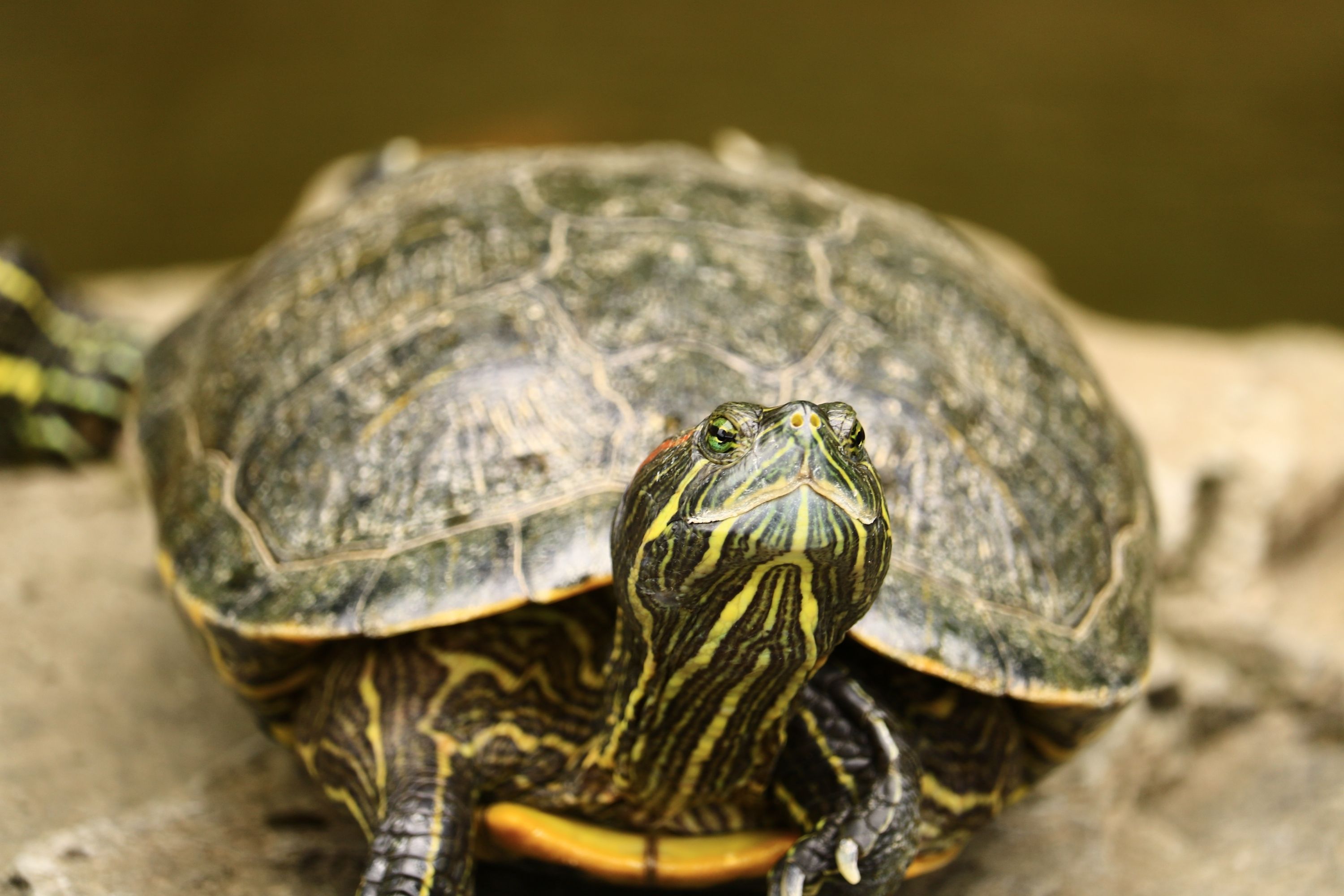Pond slider
(Trachemys scripta)

Description
The red-eared slider or red-eared terrapin (Trachemys scripta elegans) is a subspecies of the pond slider (Trachemys scripta), a semiaquatic turtle belonging to the family Emydidae. It is the most popular pet turtle in the United States, is also popular as a pet across the rest of the world, and is the most invasive turtle. It is the most commonly traded turtle in the world. The red-eared slider is native to the Southern United States and northern Mexico, but has become established in other places because of pet releases, and has become invasive in many areas where it outcompetes native species. The red-eared slider is included in the list of the world's 100 most invasive species published by the International Union for Conservation of Nature. The carapace of this species can reach more than 40 cm (16 in) in length, but the typical length ranges from 15 to 20 cm (6 to 8 in). The females of the species are usually larger than the males. They typically live between 20 and 30 years, although some individuals have lived for more than 40 years. Their life expectancy is shorter when they are kept in captivity. The quality of their living environment has a strong influence on their lifespans and well being. Female turtle's foot: Note the short claws These turtles are poikilotherms, meaning they are unable to regulate their body temperatures independently; they are completely dependent on the temperature of their environment. For this reason, they need to sunbathe frequently to warm themselves and maintain their body temperatures. The shell is divided into the upper or dorsal carapace, and the lower, ventral carapace or plastron. The upper carapace consists of the vertebral scutes, which form the central, elevated portion; pleural scutes that are located around the vertebral scutes; and then the marginal scutes around the edge of the carapace. The rear marginal scutes are notched. The scutes are bony keratinous elements. The carapace is oval and flattened (especially in the male) and has a weak keel that is more pronounced in the young. The color of the carapace changes depending on the age of the turtle. It usually has a dark green background with light and dark, highly variable markings. In young or recently hatched turtles, it is leaf green and gets slightly darker as a turtle gets older, until it is a very dark green, and then turns a shade between brown and olive green.
Taxonomic tree:







